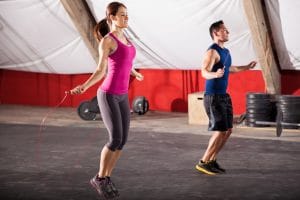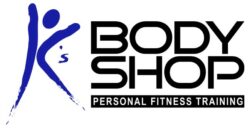
Since I provide professional personal training services in my client’s homes, I am often asked what kind of fitness equipment they will need in order to get an effective workout without having to go to a gym or pay health club fees. In truth, it depends upon the goals of the client and how much space they have as well as how much money they’re willing to spend. I’ve seen some pretty lavish set-ups, with multiple pieces of cardio equipment and a multi-station strength training piece as well as a full set of free weights and benches. Enough to fill a basement. Literally. But for most folks, something that elaborate isn’t a realistic option. Most people are interested in building an inexpensive home gym that will get the job done without breaking the bank or needing to build an addition on to the house. Something that can be easily stored out of sight or even taken along on business trips if they travel frequently. Full disclosure, I am an Amazon Affiliate and may earn a small commission on purchases, though it won’t affect the cost to you. Every single piece I’ve listed here is equipment that I’ve used myself and recommend to my clients. Here are a few ideas for building your home gym:
Stability Balls
It’s amazing what you can do with a simple ball. They come in a variety of sizes: for some exercises the size of the ball won’t matter much, for others it will. In general, choose the size where your hips and knees are at a 90 degree angle when sitting erect on the ball. For a rough estimate, an average height woman would do well on a 55 cm ball and an average height man would get a 65 cm for most exercises. Get a hand pump to go with it so you can keep it inflated appropriately.
Medicine Balls
They come in several weights and sizes and can be very versatile. There are old school leather balls as well as softer plastic or rubber – some can even be bounced against a wall or floor. Exercises with medicine balls can be used for strength, conditioning, core stability, coordination drills, power training, and the firmer ones can by used for self myofascial release.
Suspension Trainers
TRX is probably the most well known, but I prefer the Anchor Point Training system. For close to the same price, the Anchor Point system includes a suspension trainer, 2 unbreakable wide webbing bands in either light or heavy, and a high & low anchoring system that is much more versatile than the TRX. I have both and they do have some slight differences. The TRX handles allow you to put your feet in them for suspended planks or atomic push-ups. The Anchor Point suspension trainer can easily be used 1 arm at a time because it’s rigged so that when you pull on just one side, the webbing doesn’t slip. The bottom anchor point also allows for attaching the wide webbing bands near the floor, similar to a low cable. They are both high-quality pieces of gear that are easy to stow out of the way when not in use. I own both.
Exercise Bands and Tubing
They come in different thicknesses to provide more or less resistance when being stretched. The flat bands don’t come with handles, but you can get handles separately and attach if desired. Tubing has handles that may ore may not be padded for comfort. You can also get loops to go around knees or ankles. Here is an exercise band set that contains most of the things you’ll need to get started.
Jump Rope
Jump ropes provide opportunities for low level plyometrics, coordination between upper and lower body, and kick butt cardio! Some ropes are even weighted to provide an even greater challenge.
Body Weight Exercises
Won’t cost you a thing! Check out the earlier post about strength training with no equipment to get some basic ideas.
Adjustable Dumb Bells
Instead of buying and storing a whole rack of dumb bells, there are some that are adjustable to give you a range of weight in a small package.
Ankle Weights
Some are fixed weight, while others allow you to remove bars of metal that are stored inside the cuff to make them adjustable weight. Typically between 1 and 10 pounds. Smaller sizes can also be used on the wrist.
Water Jugs
These are dirt cheap and especially handy for water exercise in the lake or pool. Simply fill the jug with water to add weight, or keep them filled with air and try to push them underwater (it can be harder than you think, depending on the size of the jug).
Heart Rate Monitor
If aerobic exercise or weight loss is a primary goal, a heart rate monitor can keep you moving at the appropriate intensity for your goal. You can get a relatively inexpensive basic model that only shows heart rate, or spend hundreds on models that include all kinds of bells and whistles such as GPS, time of day, pace, heart rate, estimated caloric expenditure, elevation gain / loss, etc.
Foam Roller
Foam rollers are commonly used for self myofascial release or balance training, but also good for corrective exercise – especially core training.
With these small pieces of gear, most people will have what they need to at least get a good start on a solid fitness program. Serious athletes or those wanting more significant strength training would still be better off with a full set of free weights including barbells, adjustable benches, and possibly a lifting platform. For those wanting more cardio conditioning and aren’t willing to brave the outdoor elements year ’round, a good quality treadmill or other piece of cardio equipment would be beneficial, but is usually quite expensive. I’ll save those recommendations for another post. There are safety considerations as well as financial and practical when investing in a big piece of fitness equipment, especially if there are pets and/or small children in the home.
If you’re in the Minneapolis area and would like a consultation about how to build an inexpensive home gym to best suit your needs, give me a call and I can take a look at your space or help guide you through the decision making process. I can also show you how to use any equipment that you may purchase or already have.
